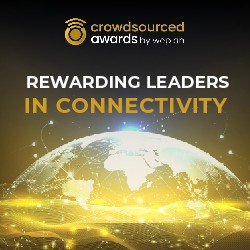During its participation at the world's biggest ICT show, Huawei hosted its Global Digital Transformation Forum (GDTF), which saw keynote speeches and address from Huawei officials and a host of industry players from around the world.
During the one-day event, officials from Huawei highlighted the ICT sector's role in advancing economic and social development, during this year's edition of Mobile World Congress in Barcelona, Spain. In his keynote address, William Xu, executive director of the Board and chief strategy marketing officer of Huawei, focused on growth opportunities in Emerging Market and highlighted Huawei's commitment to creating value for communities by collaborating with operators to help them maximize network assets, deploy home broadband and indoor digitalization, and drive connectivity to enhance the user experience, while promoting economic and social growth.
Huawei officials, along with industry experts, also discussed connectivity's impact on business success, and defined the key themes and trends affecting technology growth. Themes discussed during the session covered 5G Innovation, Huawei's ROADS to New Growth, Network Value Maximization and Operations Transformation. The sessions provided a platform for operators to share industry-wide challenges, strategies, and best-practice digital solutions.
On the sidelines of GDTF, Huawei released the industry's first 5G network slicing router. Offering 50GE base station access and seamless compatibility with 100GE, the slicing router achieves physical isolation of port channels based on innovative Flexible Ethernet technology to provide differentiated SLA guarantee.
On the day before Mobile World Congress (MWC) in Barcelona, Huawei releases the world's first 5G core solution for commercial use case, known as Service-Oriented Core 2.0 (SOC 2.0). At the 2016 MWC, Huawei introduced the world's first 5G core prototype, known as SOC 1.0, and verified its multi-service slicing technology. SOC 2.0 will show the commercial 5G capabilities of the solution and enable all access to 5G networks and all services in 5G. It will not only provide connectivity for a multitude of terminals from various industries, but also on-demand services for all vertical industries.
During one of MWC, Huawei showcased at its main exhibition its growth plans, business models and latest developments in themed areas: 'Maximizing Network Value', 'All Cloud to Support 5G', 'Agile Digital Operations' and 'Cloud-based Digital Services', including a complete range of All Cloud solutions (All Cloud core/wireless/bearer network solutions etc.).
Also ahead of MWC, Huawei and DLR (Deutsches Zentrum für Luft- und Raumfahrt) have tested 5G for cooperative automated driving in Munich. The results show the practical applicability of 5G V2X to achieve a reliable and ultra-low-latency connection between vehicles for collision avoidance. Currently, Huawei and DLR investigate the application of 5G V2X (Vehicle to Everything) for more complex cooperative maneuvers, starting with 5G-enhanced platooning.
Huawei's NFV solution was awarded Best Technology Enabler during this year's edition of MWC. The award came in recognition of Huawei's leading capabilities and outstanding performance in NFV architecture, technology, commercial application, and the evolution toward Cloud Native. Organized by the GSMA, Mobile World Congress is the world's most influential event in the mobile communications sector, and the GSMA Global Mobile Awards are considered the highest honor within the industry.










